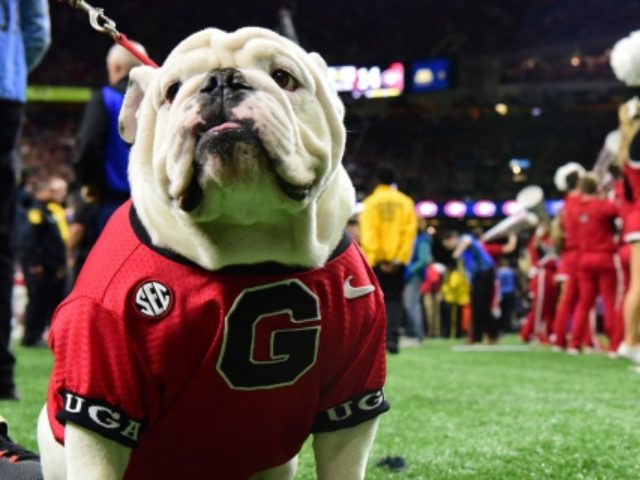People for the Ethical Treatment of Animals (PETA), has issued a statement reaffirming their desire for school’s to stop using live animal mascots, in the wake of an incident involving animal mascots at the Sugar Bowl.
On Tuesday night, an hour before the Texas Longhorns were set to take on the Georgia Bulldogs in the Sugar Bowl — Bevo, the Texas mascot and actual longhorn steer — lowered his head and went after the Georgia Bulldog, UGA.
Bevo is not here for this mascot meeting. #HookEm pic.twitter.com/KXgaQzGm0W
— Danny Davis (@aasdanny) January 2, 2019
From another angle:
LOOK OUT, UGA! pic.twitter.com/DAIB0teajU
— SportsCenter (@SportsCenter) January 2, 2019
In response, PETA issued a statement on their website using the incident as an example of why animal mascots should not be allowed:
The frightening encounter, in which Bevo broke free of the metal barricades he was caged within and ran in Uga’s direction, aired live just before the game.
Bevo’s handlers were quick to say that the steer is “as docile as a lamb” and that “[h]e was just going to say hi,” and that may be true. Steers, like all animals, are individuals with unique personalities. It’s quite possible that Bevo was simply scared by the noise, lights, and chaos in the stadium and tried to flee from the confines of his makeshift pen. But that doesn’t change the fact that Uga or any of the humans standing nearby could easily have been trampled and killed.
This frightening near-tragedy is yet another example of the reason most colleges and professional sports teams retired their live-animal mascots decades ago—and the handful who haven’t yet should quickly follow suit.
Live animals used as mascots, such as Baylor University’s bears and the University of North Alabama’s lions, are held in captivity and often denied the opportunity to fulfill many of their most basic instincts. They’re frequently carted around to sporting events and public appearances, which are confusing and frightening for them. Human mascots can engage with sports fans, pose for pictures, lead cheers, and pump up their teams and fans much better than a terrified animal can. They’re also much less expensive for schools, and some universities offer scholarships for student mascots.
If your favorite team is still forcing live animals to serve as mascots, please send a polite e-mail to its fundraising or community-outreach committee urging it to use willing human participants instead.
As the Georgia fan site Dawg Nation reports, “the Uga mascot line started in 1956, and the canine attends all UGA home games, many away games, and other school-related events.”
Follow Dylan Gwinn on Twitter @themightygwinn

COMMENTS
Please let us know if you're having issues with commenting.